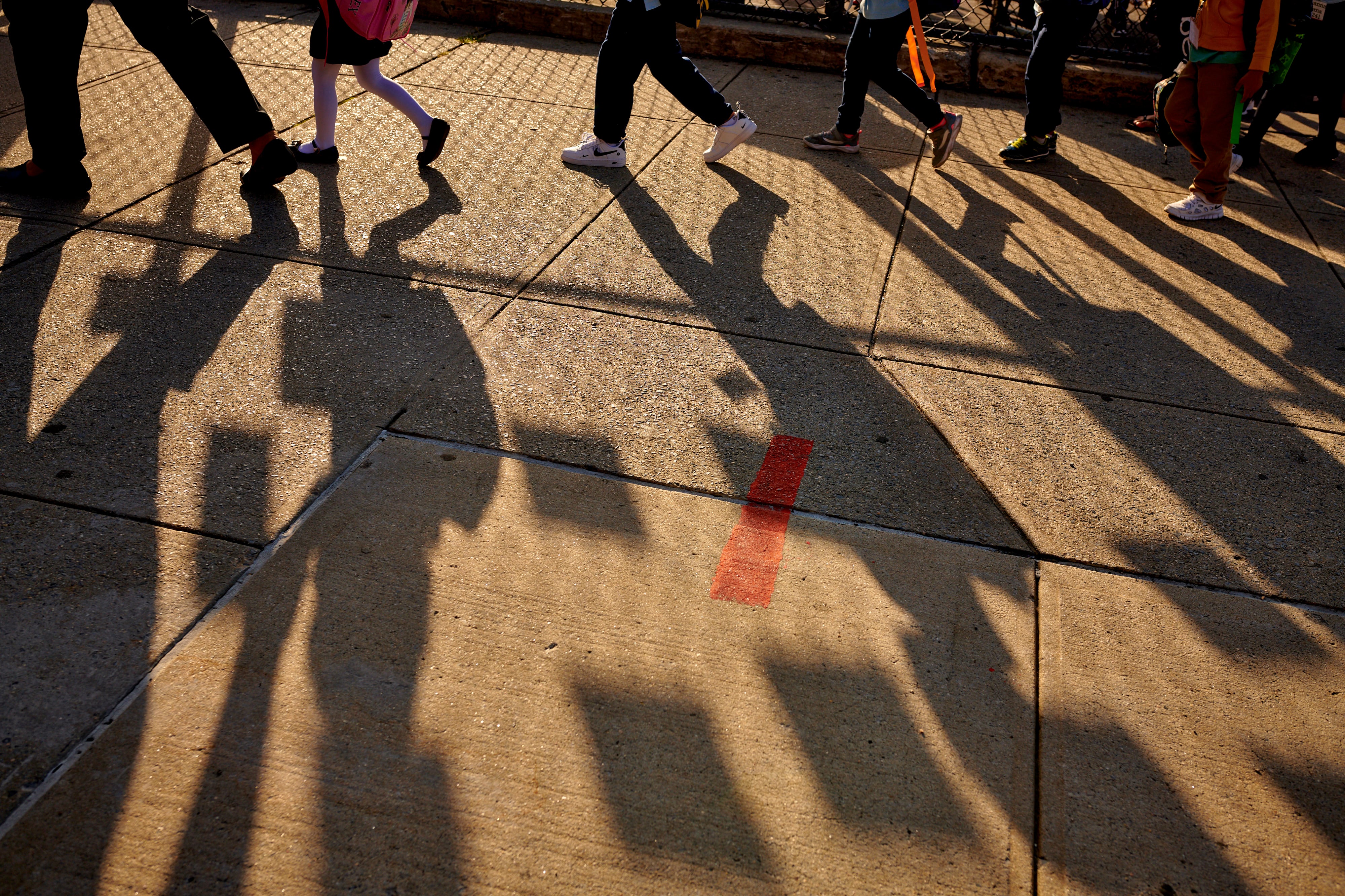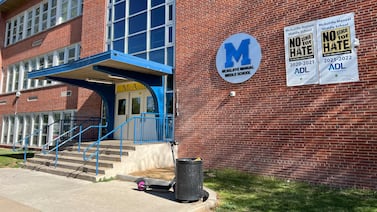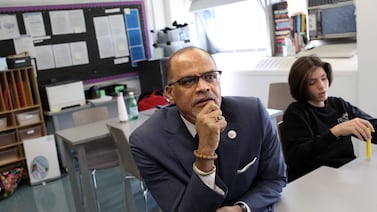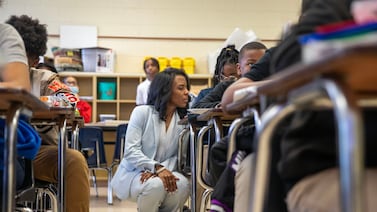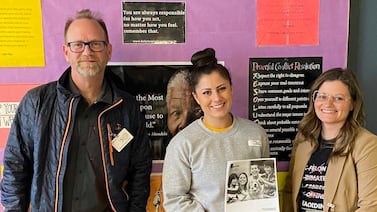How does the state determine whether schools are doing well or if they are struggling and need extra support?
Before the pandemic, state officials relied on standardized tests and high school Regents exams to figure out how well students were doing, along with other factors, such as graduation rates. But the public health crisis paused state testing and affected school performance metrics in other ways.
Now, education department officials are seeking a new, temporary evaluation system for the next two school years, with the hopes of creating something more permanent for the 2025-26 school year.
If a school is found to be struggling, it is required to develop an improvement plan that must be approved by local and state officials. Schools that don’t make progress for five years could face state takeover or closure — but it’s a route that state officials rarely took even before developing the current accountability system, which is meant to be less punitive for schools.
In the short term, over the next two years, state officials want to exclude certain science and social studies exams, as well as measures for student growth and college and career readiness, when deciding which schools need improvement. These changes are necessary, officials say, because schools are still missing a trove of data, such as enough student participation in state tests, because of the pandemic.
Already, the conversation is sparking some controversy. Some groups focused on education reform believe the move represents a step backward just as schools need more help as they recover from the pandemic. Other observers believe the state’s proposed plan is reasonable.
Ultimately, the federal government must sign off on these proposed changes, since the state’s accountability system is required by federal law and is written into New York’s federally required Every Student Succeeds Act, or ESSA, plan.
“They’re doing a decent job of balancing what’s of interest in the state and the federal ESSA requirements, and incorporating all the instability and uncertainty that came with the slowdown of testing during the pandemic,” said Aaron Pallas, a professor at Teachers College and an expert in testing.
But Education-Trust New York, an advocacy organization focused on equity issues, worried that several of the proposed changes could mean masking “bright spots and disparities,” according to their written public feedback to the state.
“I think these next two school years are incredibly important for kids coming out of the pandemic,” said Jeff Smink, the group’s deputy director, in an interview with Chalkbeat. “We have to both give them all the support they need but also hold them to high standards, and I just don’t feel like we’re doing that right now.”
What metrics would still be used?
Under the state’s proposal, schools will still be measured on English language proficiency (based on a state language exam for English learners), graduation rates, how well students are doing in core subjects based on Regents and state test scores, and chronic absenteeism. In New York City, chronic absenteeism has been a pressing issue, with 41% of students last school year absent for at least 10 school days.
What do state officials want to ditch (for now)?
The state wants to put a pause on measuring academic progress based on certain goals for student scores on state English and math tests.
State officials say they want to update these goals — first set in the 2017-18 school year — before they use them to determine whether schools are struggling.
The state’s proposed plan would also pause the use of “Measures of Interim Progress,” which more broadly measures whether schools are meeting goals for academics and other things, like their graduation rates.
For elementary and middle schools, officials want to pause how they’ve been measuring student growth, largely because of the lack of testing data. Typically, they calculated student growth using three years of testing data, but the pandemic caused big disruptions: For example, just one in five New York City children took state exams in the 2020-21 school year, when most children chose to learn from home.
For high schools, officials won’t consider college, career, and civic readiness metrics, which include advanced coursework or extra credentials in specialized jobs-based courses. That’s because the pandemic may have hampered students’ access to some of these programs or courses, officials said. They also worried that the pandemic’s impact on learning may have caused students to perform worse academically than they otherwise would have, such as on AP exams.
What will the state do with data, even if it’s not being used to evaluate schools?
State officials still plan to provide all of this data to schools for “informational purposes only” for the next two school years, they said.
Why do state officials want to exclude elementary school science exams and high school social studies assessments?
Science tests would be excluded because the state has changed who must take those exams. Traditionally, students in fourth and eighth grades take the state science test. However, only eighth graders took the test this school year, as the state prepares to offer the exam next year to fifth graders instead of fourth graders. That means they won’t be able to compare results equitably across elementary and middle schools that have different grade configurations.
Fifth graders will take the exam next spring. Asked why those scores won’t be taken into account for the 2024-25 school year, a spokesperson said that it allows districts to have “consistency and predictability” for now, as they attempt to rebuild the accountability system.
While calling it a “logical” move, Ed-Trust argued that excluding science tests “undermines the importance of science education” and worried schools will have less reason to focus on it. The organization suggested that the state should instead work with local districts to “ensure a smooth transition” to the new science assessments without entirely removing it as one way to measure student performance.
On the high school level, officials want to pause using social studies tests because of multiple exam cancellations in recent years. The state looks at cohorts of students, such as the graduating class of 2023, when considering how they performed on these tests, namely the Regents exams for Global History and Geography and U.S. History and Government.
But students who will graduate this year couldn’t take Regents exams in 2021, when they were in 10th grade, because of the pandemic. U.S. History and Government exams were also canceled last year, when these students were juniors, in the wake of a mass shooting in Buffalo, with the state education department claiming there was material on the exam that could “compound student trauma.”
State officials have emphasized that this plan “in no way diminishes” the importance of science or social studies instruction.
How will schools be labeled if they need support?
The lowest performing schools are known as schools in need of Comprehensive Support and Improvement, or CSI. But the state won’t list new CSI schools until the 2025-26 school year because they identified a group of such schools this year under a tweaked system, and that process only happens every three years, officials said.
A total of 139 New York City schools were identified this year as in need of some level of improvement, with 83% of them listed as CSI schools, according to state data.
However, New York will identify schools for Targeted Support and Intervention, or TSI, next year, which must happen annually per federal law. Those are schools that aren’t meeting goals set for specific student groups, such as by race, economic status, and those with disabilities.
In one recent — and perhaps confusing — change, schools that are meeting or exceeding their goals are no longer called “Schools in Good Standing” and instead are now labeled by the state as schools identified for Local Support and Improvement, or LSI.
What will happen for the 2025-26 school year?
State officials plan to revamp the accountability system for the 2025-26 school year after collecting feedback from the public. The new plan will also incorporate any changes to the state’s graduation requirements, which could come as soon as the end of this year. The education department is rethinking the role of Regents exams in graduation, among other considerations.
Pallas said that the plan for the 2025-26 school year and beyond would still have to meet federal ESSA requirements and earn the buy-in of school district leaders — meaning that it likely won’t be “a dramatic break from the past.”
“It’s gotta be something that feels progressive but also comfortable,” Pallas said.
Thomas Wilburn contributed.
Reema Amin is a reporter covering New York City public schools. Contact Reema at ramin@chalkbeat.org.


